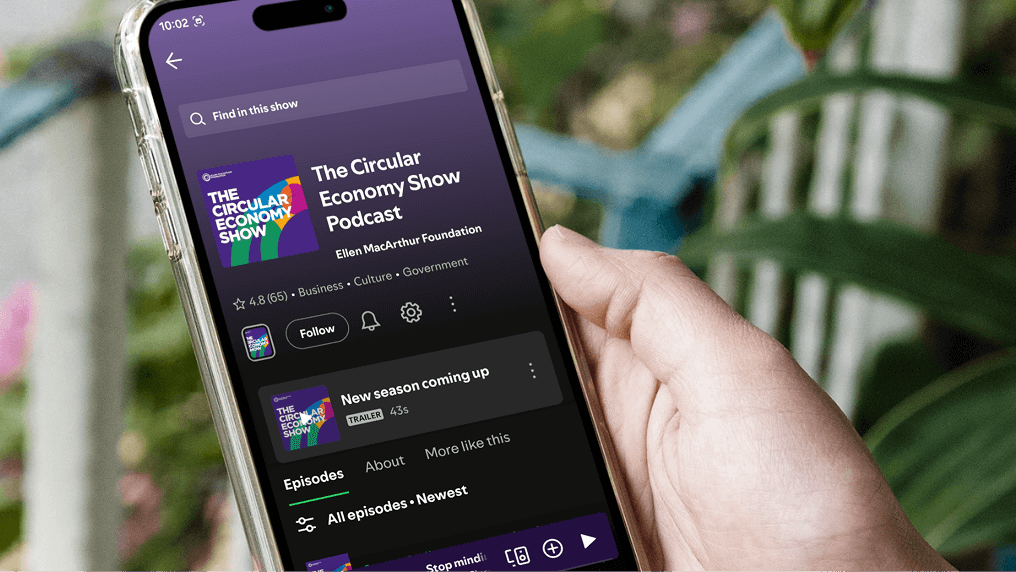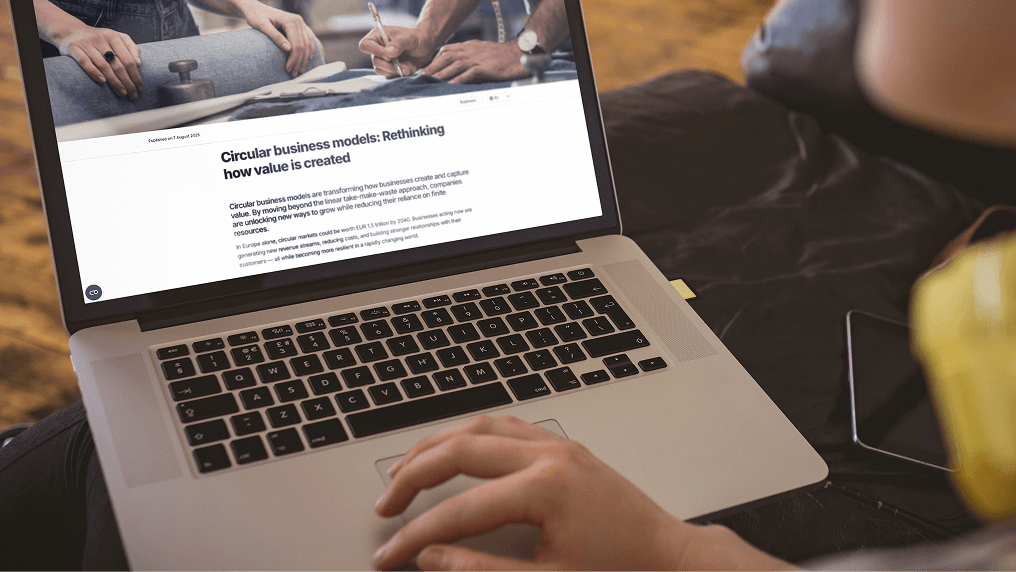In the penultimate episode of our bite-sized series on regenerative design, this week we hear from Janine Benyus, author of Biomimicry: Innovation Inspired by Nature, on how to combine ambition and biomimicry to create regenerative infrastructures in our cities.
Listen on Spotify, Apple Podcasts, or wherever you get your podcast
Useful links:
Transcript
Finley Phillips 0:03
Hello, I'm Fin, and welcome back to the Circular Economy Show Podcast, published by the Ellen MacArthur Foundation. We're midway through a series where we're providing you with a dose of inspiration from thought leaders on the topic of regenerative. Last week, we heard from Biomimicry 3.8's Nicole Miller on Project Positive - the ambition to transform our spaces into places that replicate the ecosystem services of the land next door. This week, let's hear from Janine Benyus, the original author of the topic of Biomimicry. Her core question is: what is the level of ambition we should have in anything we create?
Janine Benyus 0:47
So we actually set about at Biomimicry 3.8 to see if we could design for ecosystem services. And we said, you know, well, people said, okay, well, you're probably going to plant a lot of plants, because they'll cool the air, they'll build soil for you, you know, the plants will do it. Because as a toddler, which we are, we're very young species. Two to 300,000 years, compared to 3.8 billion year, so we’re in our toddler age, we're just like, what? Well, if we want to do all these good things, we'll just plant some things and nature will do it. The rest of nature will do it for us. Not really, let's figure out how to have our buildings, our infrastructure, our sidewalks, our roadways, our buildings, pull their ecological weight as well. They should be storing water, they should be storing carbon, they should be cooling the air, right? Helping to mitigate floods, stopping erosion. What if, in everything you built... like I walk on sidewalks now and I say, is that all you're doing? is holding me up? Why aren't you permeable? Why aren't you like storing water? Why aren't you purifying the air through photocatalytic cement? Why aren't you storing CO2 by biomimetic cement that works like coral, based on coral reefs to store that CO2? We only get that if we start to ask that of our designs. So what we do is we benchmark biological systems that are right next door, what the city would be if we weren't there, right? It would be it would be forest or it would be a prairie or a combination of such. And we go and we actually benchmark the ecosystem gifts that that system is doing and their quantity. So we go out, we measure a place like this and we say okay, we have this iPad app, and we look at all the services and we know how much carbon is being sequestered or how much water is being stored. So suddenly, your landscape architects are not just putting in Gumdrop shrubs. You know, they're putting in something that's a bio-irrigator, something that attracts nesting and pollinating species, right? They're creating... and your architects are creating habitats, they're creating niches for birds to live in, right? And we're actually inviting in that sort of habitat support as part of the design. So what if all buildings could purify water? This is San Francisco Airport, where Brent Constantz, who studied coral reefs to figure out how to take CO2 like they do and turn it into cement. Reefs are the biggest cement they're the biggest artefact on the planet. And they're, they're cement essentially. So he mimics that, it's a biomimetic cement. He's, it's a company called Blue Planet. And if you go into the San Francisco Airport, that's your aggregate and your concrete. It's sequestering CO2. The Bank of America building has an HVAC system on it that cleans the air, and it comes into New York City... New York City air comes in at least three times cleaner. Why don't all buildings do that? Right, we haven't asked.
Finley Phillips 4:07
Thank you for listening to this episode of the podcast. If you enjoyed it, then please do subscribe to the Circular Economy Show podcast wherever you listen to your podcasts. We'll speak to you next time.






